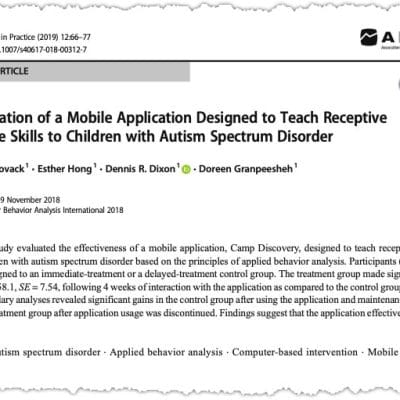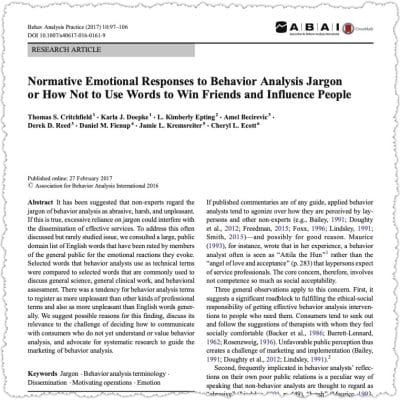Autism from Age 2 to 26: What Can We Learn About Treatment from Longitudinal Studies
Catherine Lord
This research, presented at the 2017 Michigan Autism Conference, focuses on understanding the developmental trajectory of preschool children with autism as they transition into adolescence and adulthood. The study aims to identify predictors of outcomes such as adaptive skills, quality of life, and mental health, shifting from a focus on negative outcomes to coping strategies for individuals and families. Early findings are based on interviews and assessments conducted up to age 26,
This product has been discontinued.
You may also like…
-
BundleSale!

32 Total BCBA CEUs
4 Ethics CEUs28 General CEUsCosmic Bundle
$319.88Original price was: $319.88.$216.98Current price is: $216.98. Add to Cart Quick View -
Interactive Video

1 BCBA CEU
The Scientist-Practitioner in Behavior Analysis: A Case Study
Murray Sidman4.50 out of 5(2)$9.99 Add to Cart Quick View -
Article Quiz

1 BCBA CEU
An Evaluation of a Mobile Application Designed to Teach Receptive Language Skills to Children with Autism Spectrum Disorder
Marlena Novack, Esther Hong, Dennis Dixon, & Doreen Granpeesheh$9.99 Add to Cart Quick View


